In Umberto Eco’s The Mysterious Flame of Queen Loana, Yambo, the brain damaged protagonist, trawls his childhood home at Solaro finding an attic of dusty, mildewed memories — magazines, newspaper clippings, knick knacks, and comics. The eponymous comic strip for which Eco’s novel is named has sadly dimmed with time, now clearly seen as nothing more than a faded talisman and one of the “most insipid” tales “ever conceived by the human brain.” Yet age has not withered his attraction to Alex Raymond’s most famous strip…
Flash Gordon Sunday 1935 (from the collection of Rob Pistella)
…the memory of its hero lodging itself into his dying dream towards the close of the novel, informing every childhood reminiscence and fleeting recollection; this final immersion retaining the wild discursions of a child’s mind now uncomfortably snared to the adult penchant for structure, nonsense, and logic.
There is the nefarious Ming, the sense of camaraderie among our intrepid adventurers, the grand staircase leading to heaven like something out of Powell and Pressburger’s A Matter of Life and Death…
…or, perhaps, Hal Foster’s Egyptian sequence from Tarzan which is referenced throughout Raymond’s early years on the strip — the same obeisance to that dark god of masculine virility and white supremacy.
Tarzan 6-26-1933, Hal Foster
Flash Gordon 6-10-1934, Alex Raymond
And, of course, there are the fantasias on the female form in which Raymond immersed himself once his skills and reputation allowed for it. This world of scantily clad women with welcoming bosoms and teardrop asses. That vision of the cold, domineering princess ready to do every form of evil in the name of jealousy, but who is redeemed by her willingness to melt in the arms of her “true” love. These figures coyly praised by Al Williamson in his introduction to the first volume of the Kitchen Sink reprinting of Flash Gordon and ignored altogether by Bruce Canwell (in an article found in the recent IDW reprint) in favor of the contributions of co-writer Donald Wynkoop Moore and a few apologies for the lackadasical scripting on the strip. The latter’s decision not altogether unexpected I should add, the topic in question being tiresome, obvious, and puerile.
The Sunday (of June 2nd 1935) in which Dale pleads desperately for recognition from the brain-washed Flash before being ill used by her tormentors is perhaps the most glorious representation of Raymond’s barefaced fixations.
One can only imagine the sweat trickling down the heroine’s immaculate body as she holds herself taut in anticipation of the reader’s gaze, delighting in her exquisite torture. Raymond allows not one inch of readerly terror. There is only delight in this display of the draughtsman’s pleasure in pain. There are also the cat fights which take on the fervor of lesbian mud wrestling, the depraved domesticity…
…the conjoined torment at the pole of blissful brutality.
There can be little doubt that Raymond’s Flash Gordon is a textbook example of that perverse quality (and sexuality) which is marked by the way “in which violence, aggression, and pain become vehicles for other things — for staging dramas of suspense, supplication, abandon, and relief that enhance or substitute for sexual acts…its way of not ending in coitus, its lack of subordination to a genital goal of discharge or end-please.” (Linda Williams)
And so it is in Yambo’s (and presumably Eco’s) meditation on his childhood comics where “neither the femme fatales nor the satanic males (think of Ming with Dale Arden) ever sought to ravish, rape, imprison in their harems, or know carnally the objects of their lust. They always sought to marry them. Protestant hypocrisy of American origin, or an excess of bashfulness imposed on the Italian translators by a Catholic government waging a demographic battle?”
Perhaps we should add to this not only the desire to marry and possess in the most virtuous of traditions but also the desire to whip and demand submission. Quite unforgotten by the producers of the film adaptation as evidenced by that fan favorite, the whipping of Aura, and certainly well appreciated by Eco in his jaunt through Raymond’s strip — yet elided here because of that tone of innocent nostalgia which must persist. Whatever may be the case, one might see in Yambo’s comment either a call for a certain logical consistency to aid the suspension of disbelief or mere misogynistic nattering.
I think it would be fair to say that we are inundated with these images from the realm of pain on a far more regular basis than the average reader of the Sunday funnies in the 30s. Presumably, we are living in a more enlightened age. Indeed, we find Linda Williams enumerating the various approaches towards these perversions towards the mid-section of her chapter on “Power, Pleasure, Perversion”, recounting everything from Laura Mulvey’s vision of such products as “avenues of escape for phallically threatened male viewers”; to Gaylyn Studlar’s suggestion that “cinematic visual pleasure is not sadistic but rather masochistic” partaking of the “pre-oeidipal pleasures of merger and fusion rather than oedipal issues of separation and individuation”; and hence to her own extension of the ideas of Mary Ann Doane where…
“…a female spectator” confronted with such scenarios “may not identify with this woman as pure, passive vicitim, for…in these scenarios…the tortured woman has arranged to play the role of suffering woman, to put on a show of suffering the better to enjoy her pleasure.”
What is clear though is that the comics have held fast to that old time religion of Protestant decorum. Undoubtedly, lapsing into indiscretions on occasion before being flogged back into submission.
Where once Marston and Peter dreamt of strong women trussed and bound up [1], we now merely have strength and role models. Where once curvaceous women and brawny men surrendered themselves to the whipping pole we now have Dilbert and the faithful PrinceVal. And who is to say this is not the better course, the cartoon strip fading into irrelevance but not falling into impurity, like St. Anthony assailed by demons and rushing into the warm, ascetic glow of the desert.
* * *
[1] From Bound to Blog #3, Noah Berlatsky
“And, hey, you know what? Good for Marston, really. False consciousness arguments are pretty dreary, not to mention condescending…I think it’s generally worth acknowledging that when people acquiesce in oppression or discrimination, they generally have some motivation that can’t be reduced outright to stupidity. It’s not wrong to want someone to take care of you…though obviously you’d want to be careful about the person. Marston’s feminist diagnosis isn’t coherent — it’s a contradictory mess of false consciousness, legitimate emotional goals, fetishization, and pro-lesbian radicalism. That doesn’t make it precisely wrong, though.”
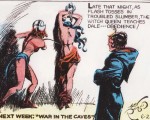

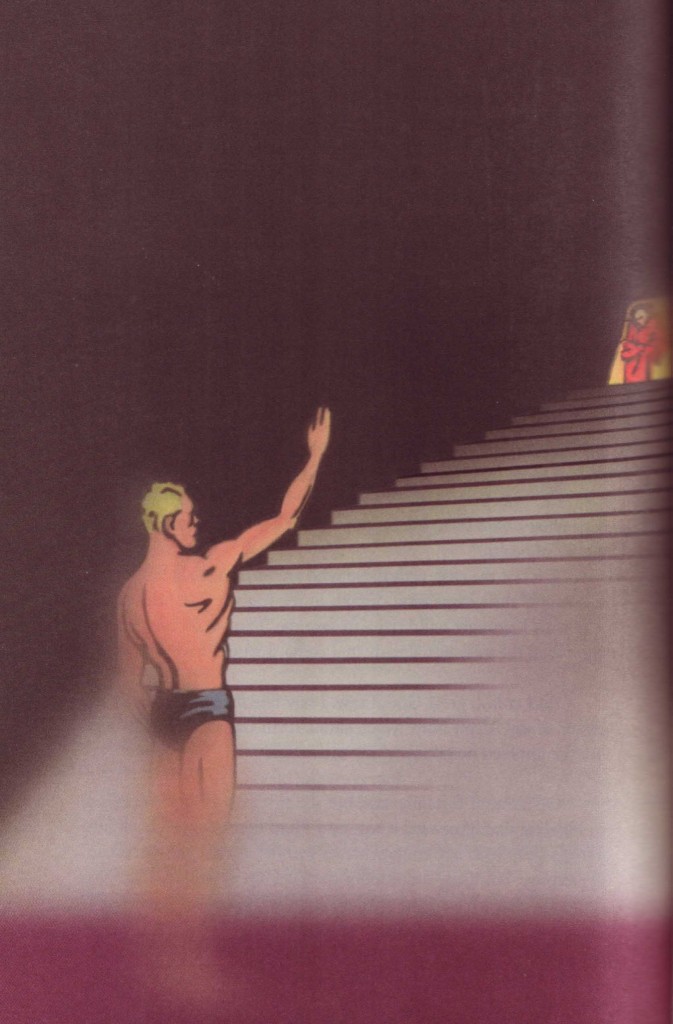
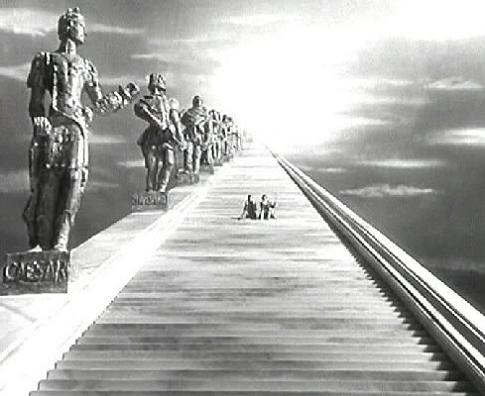
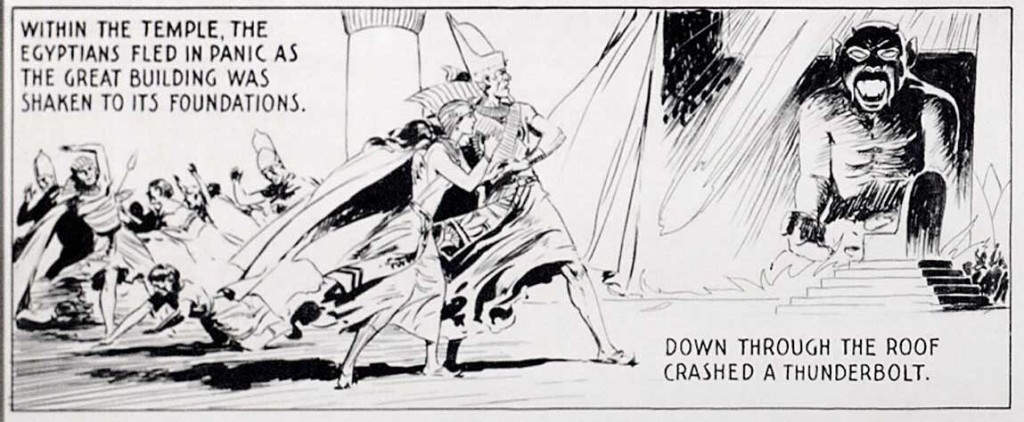

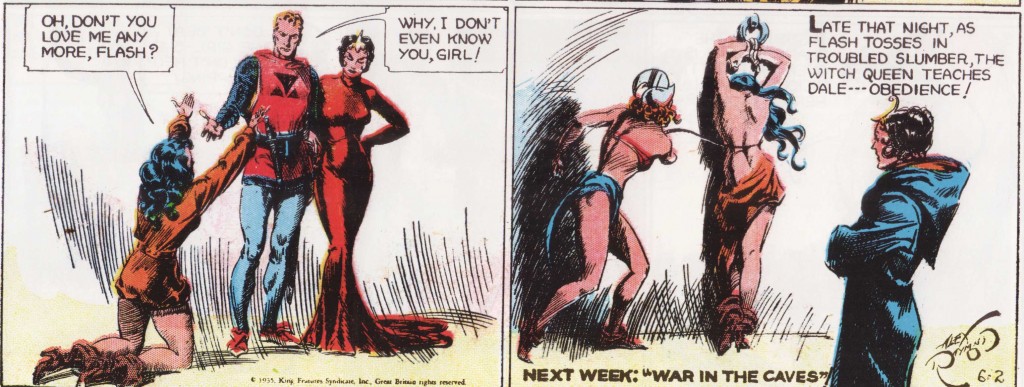
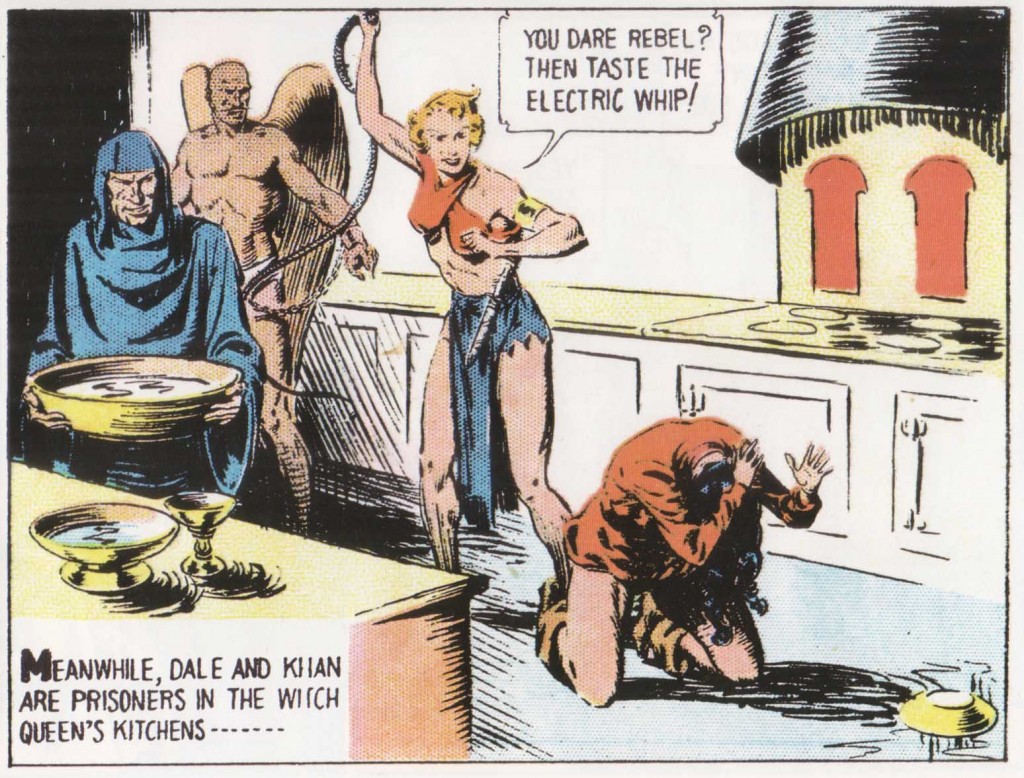
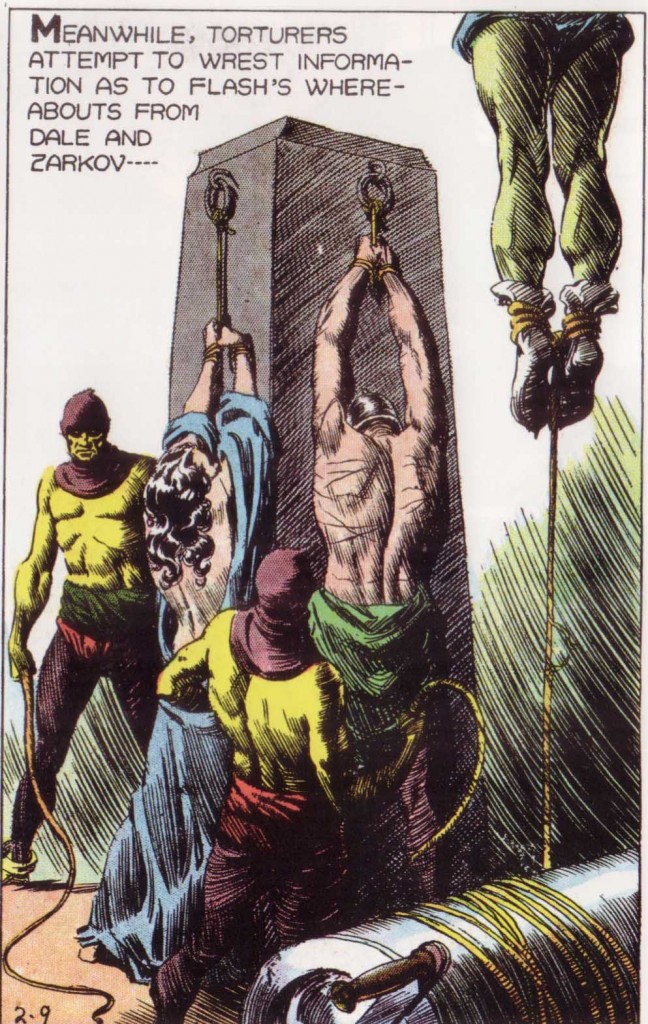
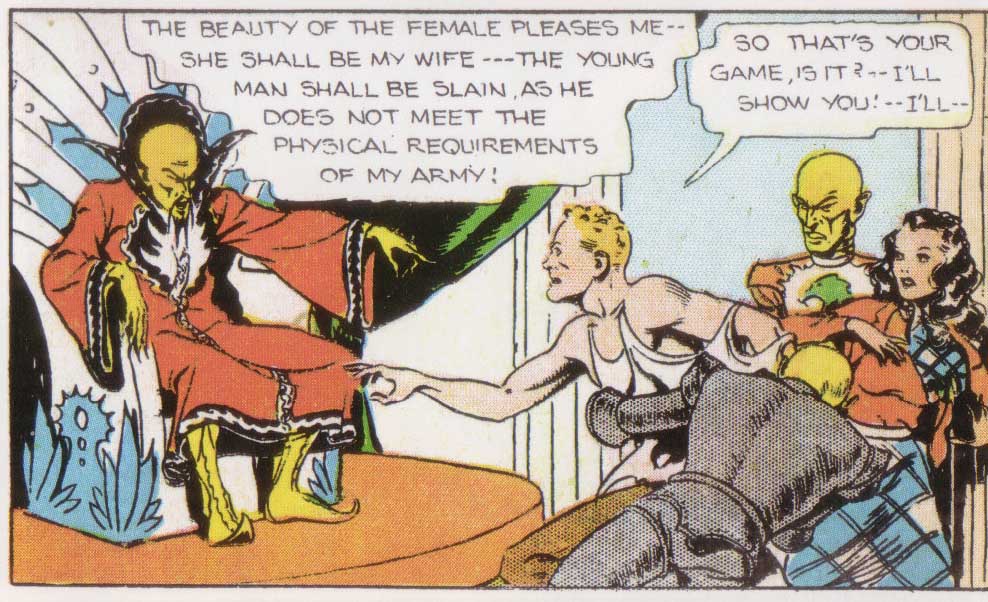

Dear Lord, yellow-skinned Ming is one of the most racist things I’ve seen in a while. I’m suprised he gets to speak in normal English rather than some mocking Chinglish.
“yellow-skinned Ming is one of the most racist things I’ve seen in a while”
Who says comics can’t compete with other pop culture?
Ritualized physical subordination of women is not restricted to the Christian tradition– and within the Christian tradition, it’s hardly restricted to Protestants. Although I’m not sure if the justified-sinner angle is being bashed here or not. The appeal is expressed with undeniable enthusiasm…
I imagine there’s a smiley face at the end of that comment? I’ll admit that the title of the article is a bad pun but The Sadomasochistic Catholic or Buddhist just doesn’t have the same ring to it. It is interesting how Eco manages to find a puritanical streak in such a “godless” (?in the best of ways) strip – full of appealing murder, humiliation, slavery, and death. Apparently, Alex Raymond was raised a Catholic so Eco was probably beating down the wrong path. He should have been thinking guilt a la Graham Greene. The strip itself suggests Roman paganism.
Sorry– I hate emoticons. It’s my iconoclastic Puritan ancestry. But yes! Smileyface implied, to be sure.